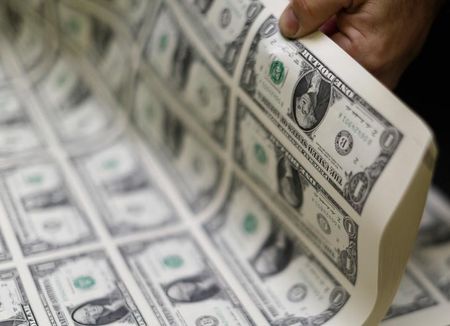Forex
Asia FX muted, dollar nurses weekly losses with nonfarm payrolls in focus

Investing.com– Most Asian currencies moved little on Friday in anticipation of key U.S. payrolls data due later in the day, although growing expectations of interest rate cuts saw the dollar headed for a weekly loss.
Sentiment towards risk-driven assets improved this week following interest rate cuts from the and the .
But mixed economic cues from some major Asian economies kept capital flows into regional markets limited, as did anticipation of more cues on U.S. interest rates.
Chinese yuan flat after mixed trade data
The Chinese yuan’s pair moved little on Friday, remaining close to a six-month high following middling trade data from the country.
China’s grew more than expected in May, buoyed by strong industrial production and overseas demand. This saw the country’s also log a bigger-than-expected surplus.
But China’s grew at a much weaker-than-expected pace, indicating that local demand remained subdued as the broader economy grappled with an uneven economic recovery.
Sentiment towards China had soured in recent weeks amid growing doubts over an economic rebound in the country and more stimulus measures from Beijing.
Dollar nurses weekly drop, nonfarm payrolls awaited
The and both steadied in Asian trade on Friday, and were set to lose about 0.5% each this week.
The greenback was wallopped by a swathe of weak economic readings, particularly on the labor sector, which pushed up expectations that the Federal Reserve will have increasing confidence to cut interest rates this year.
Traders were seen sharply increasing their bets on a .
The weak labor data also came ahead of data due later on Friday, which is set to offer more definitive cues on the labor market and interest rates.
The Fed is also set to meet next week, and is widely expected to keep rates steady.
Indian rupee tests record lows, RBI awaited
The Indian rupee’s pair moved little on Friday, remaining close to record highs with a Reserve Bank of India meeting due later in the day.
The RBI is widely expected to keep its steady, while its signals on inflation and the economy will be in close focus.
The rupee weakened substantially this week after the results of the 2024 general elections showed the ruling BJP-led alliance won a much smaller majority than expected.
Broader Asian currencies moved in a tight range. The Japanese yen’s pair hovered near 156 yen, with focus squarely on a , where the central bank is expected to begin tapering its bond purchases, tightening policy.
The Australian dollar’s pair rose 0.1%, while the South Korean won’s pair rose 0.3%.
The Singapore dollar’s pair moved little.

 Forex3 years ago
Forex3 years agoForex Today: the dollar is gaining strength amid gloomy sentiment at the start of the Fed’s week

 Forex3 years ago
Forex3 years agoUnbiased review of Pocket Option broker

 Forex3 years ago
Forex3 years agoDollar to pound sterling exchange rate today: Pound plummeted to its lowest since 1985

 Forex3 years ago
Forex3 years agoHow is the Australian dollar doing today?

 Cryptocurrency3 years ago
Cryptocurrency3 years agoWhat happened in the crypto market – current events today

 World3 years ago
World3 years agoWhy are modern video games an art form?

 Commodities3 years ago
Commodities3 years agoCopper continues to fall in price on expectations of lower demand in China

 Economy3 years ago
Economy3 years agoCrude oil tankers double in price due to EU anti-Russian sanctions























